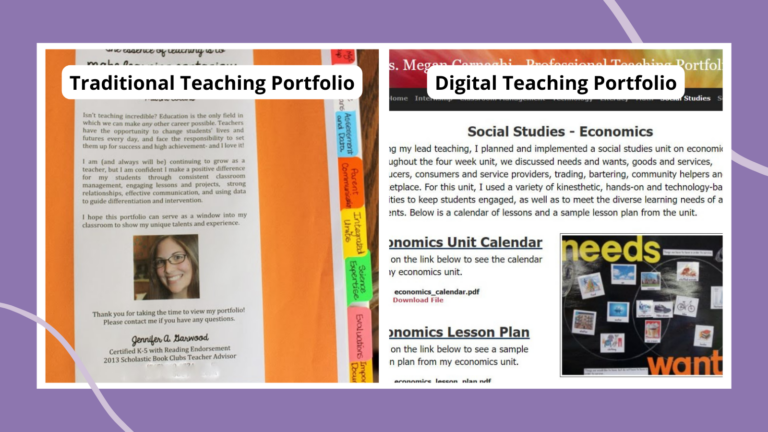Often, we are asked to take a five-minute survey at the end of a call with our electric company or cell phone carrier. We even complete surveys at the end of many college courses or professional development sessions. Now, many teachers are giving students classroom surveys so that they can better determine whether a student’s needs were met.
What is a student classroom survey?
A student classroom survey is simply a survey that the teacher gives their students, requesting feedback about the class. It often includes questions or statements about the classroom environment, the teacher’s effectiveness or teaching style, the course content, or workload. Really, which questions or statements end up on the survey depends on what the teacher hopes to learn.
Not sure where to start with a student classroom survey? We’ve got you covered.
How should I conduct a student classroom survey?
Depending on the age and ability of your students and your class size you have several options:
- Use a pen and paper survey.
- Try a Scantron form.
- Create a Google form.
- Experiment with an online survey creator.
- Have a one-on-one chat with each student.
- Invite students to share answers on FlipGrid or Recap.
[contextly_auto_sidebar]
What should I include on a student classroom survey?
First, identify your end goal. Do you want to know more about your ability as a teacher? Do you want to know what your students think about what they’re learning? Are you curious about what students want to learn in your class?
Maybe you want to learn a number of things, and that’s okay. Just keep your focus in mind as you determine specific questions or statements to include on your survey.
Decide how much time you want to spend on the survey.
Knowing how much class time you want to spend on the survey should help you determine the format of your questions. You can ask a higher number of questions if students are answering with a simple yes or no or choosing between several options, such as always, usually, sometimes, or not at all.
You could also ask students to answer on a numerical scale, such as 1–10. Just make sure that you are clear about which end of the scale is positive and which is negative.
If students are writing or typing answers to open-ended questions, the survey will take much more class time. However, with fewer, more specific questions, you could receive more detailed answers. You need to know your students and how open they are to giving you this kind of feedback.
What should I include on my student classroom survey?
We’ve provided a number of statements below to get you started. You might have students indicate how much they agree with each statement by having them choose a number on a 1–10 scale. At the end of each section, you can include a “Tell me more” prompt to initiate a more detailed explanation from respondents.
These questions are loosely based upon the 5 Core Propositions of the National Board Standards:
- Teachers are committed to students and their learning.
- Teachers know the subjects they teach and how to teach those subjects to students.
- Teachers are responsible for managing and monitoring student learning.
- Teachers think systematically about their practice and learn from experience.
- Teachers are members of learning communities.
Survey statements about teacher commitment:
- My teacher cares for my well-being.
- My teacher knows me as a person.
- My teacher cares for the well-being of the students in the classroom.
- My teacher tries their best to reach each student.
- My teacher wants me to succeed.
- My teacher believes that all students can succeed.
- My teacher does not give up on me.
- My teacher does not give up on other students.
Survey statements about curriculum and content:
- My teacher is prepared for each lesson.
- Lessons in this class are interesting.
- Lessons in this class are engaging.
- My teacher explains things in different ways if students don’t understand.
- My teacher tells us what our objective for learning is each day.
- The objective for learning is posted in the classroom each day.
- Lessons in this class are aligned to objectives for learning.
- I know why we are doing the things we do in this class.
Survey statements about student learning:
- My teacher checks to make sure we understand lesson objectives.
- My teacher works to ensure that lessons meet objectives.
- My teacher helps students keep track of their progress.
- My teacher recognizes hard work.
- My teacher gives students multiple opportunities to succeed in this class.
- My teacher helps students learn from their mistakes.
- My teacher asks me to explain my thinking.
- My teacher wants me to become a stronger thinker.
- We learn something new every day in this class.
Survey statements about teaching practice:
- My teacher shows us that they are also a learner.
- My teacher gives students choices in our work and assignments.
- My teacher tries new methods of instruction.
- My teacher admits when they make a mistake.
- This classroom is a safe place.
- This classroom is full of teachers and learners.
Survey statements about school and classroom community:
- My teacher is an important part of our school.
- My teacher supports and works with the administration.
- My teacher supports and works with their team.
- My teacher supports and works with the specialists in our school.
- My teacher supports and works with the support staff in our school.
What questions or statements do you include in your student classroom surveys? Come and share in our WeAreTeachers HELPLINE group on Facebook.
Plus, check out sample report card comments for almost any situation.


